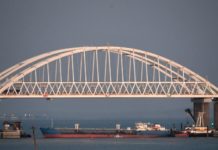MODUS OPERANDI
China now has cruise missiles on what started as a “fishermen’s shelter” in the South China Sea
Steve Mollman
China is clearly militarizing the South China Sea. To many, that was obvious years ago. For remaining doubters, Mischief Reef should clear up any doubts.
According to a report by CNBC, China has quietly, within the past 30 days, installed anti-ship cruise missiles and surface-to-air missile systems on Mischief Reef and two other fortified outposts in the Spratly Islands. CNBC cited “sources with direct knowledge of US intelligence reports.”












